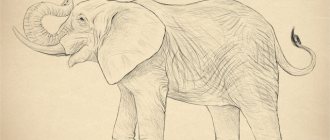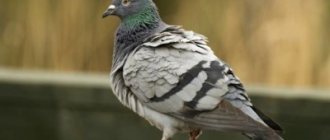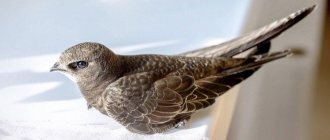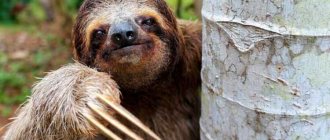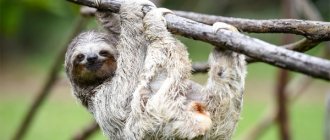Origin of the Pekingese breed
Pekingese were bred about 2000 years ago. In European countries they appeared much later.
- In 1860, the palace in Beijing was captured. Pekingese became a trophy for the victors of the Opium War.
- The breed received its official name in England; in the historical homeland, decorative pets were called “Fu dogs”, lotus flowers and even pearls.
- In China, Pekingese were idolized and pampered in every possible way. They were often depicted in frescoes and paintings.
According to legend, dogs of this breed originated from the marriage of a monkey and a lion. This, according to the Chinese, can explain their specific character.
How to choose a puppy
Choosing a future pet is a responsible process. If you plan to purchase from a nursery, then it is good to invite a professional owner with you. In any case, it is necessary:
- carefully examine the appearance, ears, eyes, fur, excluding the presence of parasites and purulent discharge;
- put the puppy in a typical exhibition position, stretching out its hind legs as far as possible, raising its head (experienced breeders teach dogs this from the first month);
- It is advisable to purchase after all vaccinations, antihistamine therapy, with a veterinary passport in hand;
- ask to see an X-ray of the hip joints to exclude the development of a congenital disease “dysplasia”, which cannot be treated and worsens gait.
The small Pekingese always has a big belly. Watch for the protrusion of the navel, it should not be visible, otherwise there will be a hernia.
Look at the behavior. The future pet should not look tired, sick, or lethargic. Choose for yourself and be sure to make friends. The breed is initially friendly, quickly gets used to it and chooses its owner.
Advice! Stand near the puppies. Whoever runs up to you first will be your favorite.
Pekingese appearance
Pekingese that ended up in Great Britain looked similar to Chins. As a result of long-term work on the breed, the following changes occurred:
- Increase in body weight;
- Shortening of limbs;
- Tight build.
Life expectancy varies from 12 to 15 years.
There are two types of Pekingese: sleeve and classic. They differ from each other in size, the sleeve ones are noticeably more compact.
Important! The weight of an adult dog varies from 3 to 5.5 kg, height at the withers is usually 15-25 cm. Standards for each country are different. In Canada and America, individuals whose body weight exceeds the specified minimum are considered rejected.
The “coat” is formed from the outer hair and undercoat. A purebred Pekingese can have any color, but its upturned muzzle is always black. Puppies with a white spot on their forehead are especially prized. The photo shows a Pekingese with a "Buddha finger". This is what this mark is called in China.
Individuals who have the following characteristics are classified as plembrace:
- Light eye color;
- Liver shade color;
- Albinism;
- Cryptorchidism;
- Overweight.
The list is supplemented with depigmented eyelids, nose and lips.
Organization of sleeping area and toilet
How to toilet train a Pekingese? The Pekingese is a small dog, which is a plus. If she is taught to go to a special dog toilet while still a puppy, then issues with walking will be resolved by themselves. Train your puppy to use the litter box like this: allocate a limited space and place moisture-absorbing diapers there.
Observe where your baby goes to the toilet most often, and mark these places for yourself. Gradually, the number of diapers should be reduced until one remains, and a dog toilet should be placed in the chosen place. The tray is filled with a special filler that absorbs moisture, or without it at all. Please note that the process of litter box training will require time and patience.
These furry pets love comfort, so owners should take care of a comfortable place for the pet. If you wish, make a sleeping place with your own hands, or you can buy a ready-made soft kennel in a store.
If you have a personal plot, then a booth for your pet would be quite appropriate there. The Pekingese is a short dog, its height is 25 cm. The size of the house can exceed the size of the dog by about 5–10 cm. The booth should not be too large, otherwise the dog will be cold, and the animal will warm a small home with its body. The entrance to the house should be well closed with a waterproof curtain. But to make the booth both spacious and insulated, buy a house with a vestibule.
If you want to build your dog’s home yourself, then prepare the necessary materials: pine boards, insulation, metal tiles. The booth must also be treated with special means. It will be convenient if the roof is removable. Also, choose the right place to install the kennel. The main thing is that the booth should be in a bright, dry and windless place.
Pekingese character
Despite their adorable appearance, Pekingese are quite independent. They are good with other pets and children, but only love their owner. Dogs of this breed experience severe discomfort with close physical contact.
It should be noted! Due to the desire of producers to increase the number of animals for sale, many animals have suffered. The main blow fell on the nervous system. This is due to the low stress resistance of ornamental pets.
Pekingese prefer passive rest and do not tolerate noise and fuss well. They expect attention from the owner and do not tolerate competition from other household members. It is useless to shout at a dog; it will defend its position to the end. Weasel is the only tool that can be used to influence a pet.
- Pekingese are unobtrusive, aristocratic and arrogant. They are not jealous, stubborn and impatient.
- Dogs of this breed are wonderful companions for older people, but they are unlikely to make friends with children.
- Due to their fragile constitution and hypersensitivity to pain, they react sharply to potential danger. It becomes a reason for an attack.
- The Pekingese makes up for its modest size with aggression. In an unusual environment, the pet does not leave the owner, but when lost, begins to whine.
Among the advantages of this dog are affection, loyalty, restraint, poise, good nature, pride and calmness.
What to feed
The breed is not prone to allergies and this is a big plus: with nutrition it is enough to follow the general rules, do not buy low-quality food and do not mix dry food with natural food, so that the animal lives a long, happy life.
As always, there are only two feeding options.
1. Dry food. Pekingese eat little, so even super-premium food will cost no more than 1,500 a month. You should buy Acana, First Choice, Royal Canin and always follow the instructions on the package. It will tell you how many times a day and in what quantities to feed your pet.
2. Natural food. Many owners believe that this is healthier, but veterinarians are unanimous that there is no fundamental difference between high-quality food and home-prepared cereals. The main diet becomes lean meat - not pork, but poultry or veal - scalded with steam. It is supplemented with porridge, boiled and baked vegetables, and occasionally fish and eggs. You can give small pieces of dried white bread, pieces of fruit and dried offal as a reward, you can buy special vitamin complexes for puppies, for pregnant bitches, for old people. They will help provide the animal with everything it needs.
An adult dog should eat no more than 3% of its own eyelid per day. Consequently, a male dog that weighs 5 kg receives about 150 g of food.
He must eat everything clean: if there is food left in the bowl, this means that the dog is overfed. Plus, some part of the diet should come in the form of rewarding treats, and this must also be taken into account.
Health status
Pekingese do not tolerate heat and high humidity. Due to the nature of the visual system, people often suffer from cataracts and corneal ulcers.
The list of inherited pathologies is quite extensive, it includes:
- Urethritis;
- Urolithiasis;
- Perianal gland adenoma;
- Intervertebral hernia;
- Heart ailments.
A trip to the veterinary clinic is required if your pet has become lethargic and lost its appetite. The Pekingese should be protected from injury.
Nurseries
Moscow and Moscow region
- FROM THE JASMINE PALACE jasmin-palace.ru +7-495-493-92-67, +7-926-324-91-45
- SAN REY san-rey.ru +7-495-434-12-62, +7-926-228-50-76
- VEA-STAR vea-star.ru +7-495-457-93-19, +7-915-386-58-21
- DREAM DEE DALLS drimdidals.ru +7-495-348-59-46, +7-903-233-16-29
- AYSINGIORO aisingiorokennel.ru +7-495-314-20-75, +7-965-234-73-94
Saint Petersburg
- Heritage morepek.narod.ru +7-812-730-82-32
- BALTIYSKIY KAPRIZ lyudmila61.wix.com/baltiyskiy-kapriz +7-965-054-00-16; +7-911-080-99-85
- Star of Askona askona-star.spb.ru +79052123008
- ELITLAIN elitlain.com/verstka%20rus.html +7-904-519-81-44
Upbringing
Representatives of this breed are difficult to train. The pet's achievements directly depend on what tactics the owner chooses. He will have to give up rudeness and severity.
- The dog should be stimulated with affection, flattery and a calm, assertive voice.
- Puppy adolescence begins at 5 months.
- During this period, the Pekingese will take special pleasure in testing the owner’s patience.
There is no special program for decorative pets. They do not like to carry out complex commands and often ignore orders. It is almost impossible to achieve absolute obedience from Pekingese.
A dog will listen to its owner if there is respect in their relationship. Shouting and punishing with force will lead to loss of trust.
Owner reviews
“I have known this breed for 12 years. Looking at our Shustrik, it seems to me that the ancient legend was confused and the Pekingese came from the love of a lion not with a monkey, but with a pig. This dog is very funny and funny. However, you can’t laugh openly at our dog - he might get offended.”
Victoria Moiseeva, Moscow.
“Initially, my husband was against having a dog in the family. But when he saw the Pekingese, he melted, and this cheerful creature has been living in the house for six years now. This is a very smart dog and never craps in the house. We only had a couple of cases when he was just a puppy. We rarely bathe twice a year, but we wash our paws often, especially in the spring and autumn. Rarely gets sick. Maybe a couple of times a year it happened that my tummy hurt, but everything went away on the second day, so I didn’t go to the veterinarian often.”
Olga Kovalchuk, Voronezh.
“We took our Pekingese as an adult. At that time he was already 2 years old. Until his old age, he was a hooligan with a royal character. He treated children well, friendly, and allowed himself to be stroked and hugged. However, if a child, being naughty, pulled him by the paw or caused pain, he could bite him lightly. Our brownie often sticks out his tongue and snores while sleeping. And how funny he sneezes!”
Margarita Goncharova, Yekaterinburg.
“I have never seen a cuter and funnier creature. Our Sophie lived for 14 years and died in 2010. Tears still come to my eyes. I was given Sofa for my graduation in kindergarten and now, as an adult, I want such a dog again. I highly recommend getting Pekingese, as they are kind, sincere and always feel when their owner is feeling bad. I’m reminded of the words of Wilfred P. Lampton, “Anyone who says you can’t buy happiness has never bought a puppy.”
Valentina Kranga, Yekaterinburg.
Pekingese care
Pekingese are easy to keep at home. He must have:
- A warm bed not far from the owner. When choosing a place for your pet, you should take into account that he is afraid of drafts and does not tolerate heat;
- Bowl for food. The diet includes foods such as chicken, turkey, cod fish fillets, and low-fat milk. It is supplemented with porridges, stewed vegetables, mineral supplements, vitamins;
- Water container;
- Favorite toy;
- Tray;
- Collar and leash;
- Walking clothes;
- Cosmetics for care.
Pekingese do not need long walks. They only need 15-20 minutes in the morning or late in the evening to get plenty of fresh air.
Pekingese puppies have soft fur. They need to be brushed every day. The owner should purchase a massage brush, a special conditioner and a rare comb for problem areas in advance.
- Grooming is an optional procedure for the Pekingese. To prevent the dog from suffering from the heat in the summer, its fur is shortened.
- It is not recommended to trim Pekingese dogs that participate in exhibitions. This is direct damage to the pet's appearance.
- You should not bathe your pet too often. Instead of regular dog shampoos, you should use powdered dry shampoo.
The owner must regularly carry out hygienic procedures for the dog: Clean the bonds, wash the eyes, the folds on the muzzle, carefully file the claws.
Key points in training
The Pekingese is a decorative dog with an arrogant, proud disposition, so it needs to be raised from an early age.
- It is important to accustom the dog to a daily routine, regular walks and feeding regimen. In addition, all attempts to gain the upper hand over the owner must be stopped. However, rude methods are not encouraged.
- Pekingese are very touchy, nothing should threaten their self-esteem.
- An important aspect in education is the early socialization of the puppy. The more he interacts with people and animals, the less risk that an adult dog will become aggressive. It is better to walk in the company of dogs of similar size.
Knowing the basic commands is important even for lap dogs: “Near”, “Don’t”, “Place”. They must carry them out instinctively, unconditionally and quickly.
Read about how to properly train a dog in the article: “Training a puppy: effective methods from dog handlers, learning commands at home.”
Nuances to consider when purchasing
The answer to the question of how much a Pekingese costs depends on several factors. Among them:
- Gender. Boys look more impressive;
- Genetic predisposition. Before purchasing, it is recommended to “get to know” his parents;
- Quality of animal care before sale;
- Puppy class (show class, pet or breed);
- Breed temperament.
The average cost of a future champion in a domestic nursery varies from 20 to 30 thousand rubles.
It is not recommended to buy a puppy based on a photograph. If there is no other opportunity to see your pet, you should discuss its return in advance.
Call me “Tsar”, just “Tsar”!
The choice of nickname for a Pekingese should be approached with great care.
- It should be noted that these sensitive individuals cannot tolerate loud and harsh sounds. Therefore, the name should not contain “growling” consonant formidable nicknames.
- The common people’s “vasyas” and “friends” will not suit His Majesty either.
- The combination of voiceless consonants - “k”, “x”, “sh”, “p”, “t” - in the Pekingese’s nickname is not recommended - they hurt his tender ear.
- The nickname should take into account the character of the pet. Variants of names related to coat color are also possible: Goldie, Fox, Diesel, etc.

